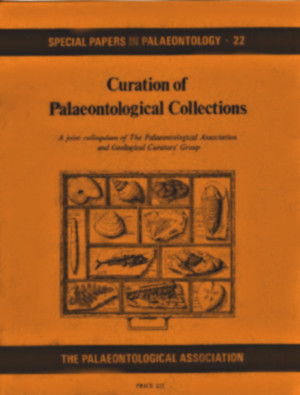Reg. Charity No. 1168330

Fossil vertebrates are characterized curatorially by their size disparities and their multi-boned skeletons. A curator has to find sufficient space for the large specimens and to maintain a systematic or stratigraphical sequence in the collections. Public display and the use of annexes or outstations are two options for solving or sidestepping the over-all space problem. Fossil vertebrates are best stored on lower floors, separately from offices, in labelled or numbered cupboards which allow flexibility in the fitting of wooden drawers or shelves. Heavy specimens should be catalogued, but not always repaired, then placed with their labels visible, well apart from one another, on low shelves, supported as necessary on plastic or rubber foam or wooden pallets. The new storage for fossil vertebrates at the British Museum (Natural History) is described briefly.